Daurian rhododendron: what does it look like, where it grows and how to care?
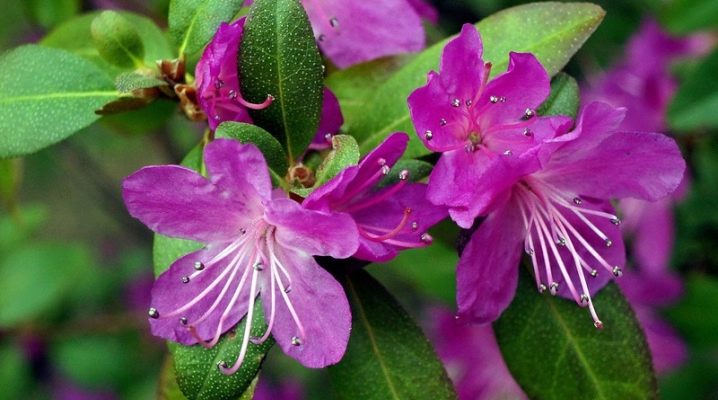
Daurian rhododendron is a unique, bright and beautiful flower. It can be either evergreen or deciduous. Beautiful bright inflorescences immediately attract attention and become the main decoration of the site. The appearance of wild rosemary, as well as the rules for planting and caring for it, will be discussed below.
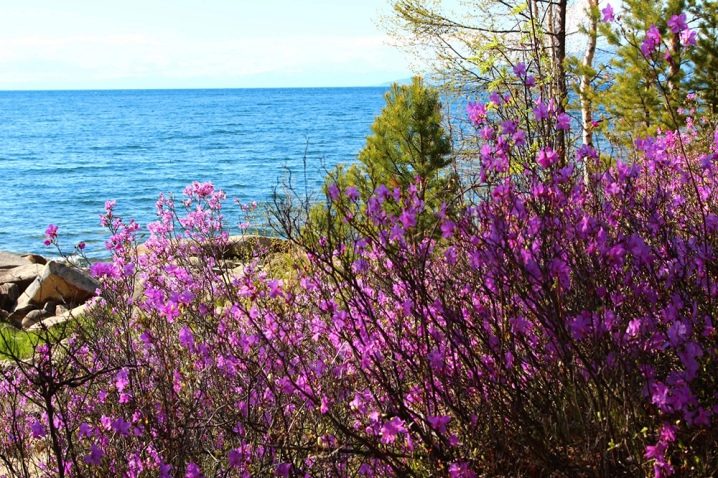
Description
Daurian rhododendron is a plant belonging to the heather family, which is why our compatriots often call it wild rosemary. The second unspoken name is rosewood. This is how the name itself is translated from Greek. This is explained by the presence of bright pink flowers, but there is no similarity with an ordinary garden rose. This plant is classified as a wild plant, although with proper cultivation it can be rather easily grown on your site. It is an evergreen shrub, up to two meters high, and with leaves ranging from 25 to 40 pieces.
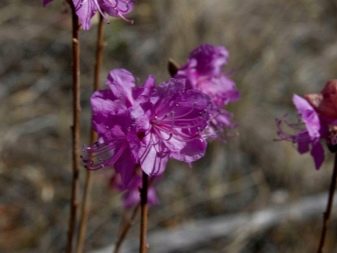
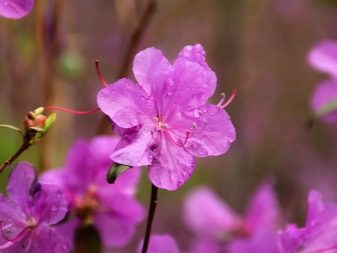
The stems are covered with a small nap, their color is greenish-purple. They are thick and fleshy, and during the flowering of the rhododendron they are practically invisible due to the abundance of pink flowers.
The leaves themselves are about 3 cm wide and up to 5 cm long. They are dense, rather fleshy and pleasant to the touch. Their color changes depending on the season: the closer to winter, the darker they become, and in early spring their color is light green with a slight gloss. With the arrival of cold weather, the plant does not have time to shed all the leaves, so some of them overwinter right on the stems. Dahurian rhododendron flowers, as a rule, are painted pink or lilac, their appearance is very similar to small and beautiful bells. In some varieties, the flowers themselves are painted in white tones. They grow in clusters of 15–20 pieces in one brush. The size of each flower is about 4 cm. Flowering on average lasts from early April to late May.
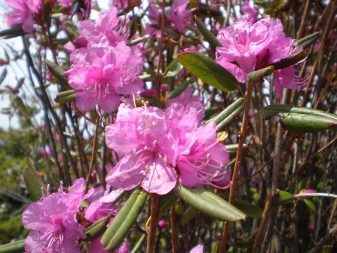

In the wild, this flower grows mainly in temperate climatic latitudes. It can often be found in the steppes of Asia, Mongolia and in Transbaikalia - Dauria. After the end of flowering, in place of the flowers, fruits appear in the form of a small seed box. The plant can withstand severe frosts - up to 45 degrees below zero, and its average life is 50 years.
Not all varieties of Daurian rhododendron are suitable for growing at home. Some of them have poisonous pollen and are often the cause of severe allergies. Beekeepers should also grow this plant with extreme caution, since honey made from its pollen has strong hallucinogenic properties.
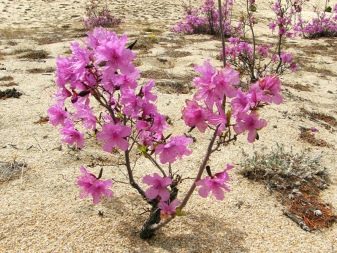
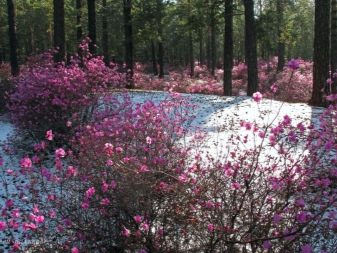
Popular varieties
For home cultivation, botanists today offer the following varieties of this plant.
- Rhododendron "April Snow" Is a semi-evergreen perennial shrub, the second name is the Daurian wild rosemary. The height of the shrub, as well as its width, can reach one and a half meters. The plant grows about 7 cm per year. The maximum leaf size is 4 cm, the color is light green. The flowers are located at the ends of the shoots, their size is no more than 4.5 cm. The color is white with a cream shade. Flowering begins early, even before the leaves dissolve, around mid-April.
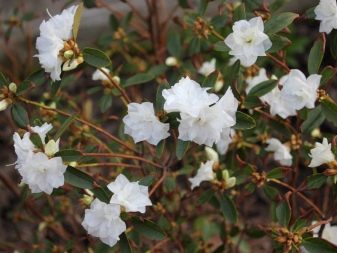
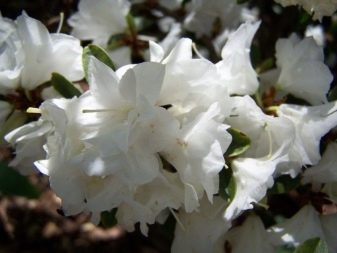
- April Jam - a compact shrub, the height of which does not exceed 70 cm, and the width is 85 cm. The flowers are double, white, funnel-shaped. Their size can reach 5 cm, they grow in brushes. The leaves are dark olive colored and elliptical in shape.Flowering occurs around the beginning of April and lasts up to one and a half months.
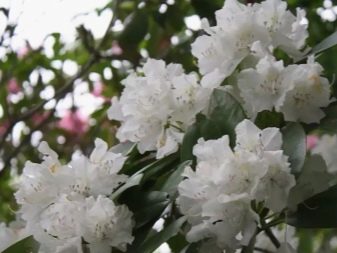
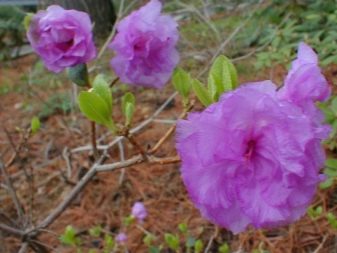
- Ledum. The Daurian rhododendron and this flower have a common origin. They both belong to the heather family. These are small evergreen shrubs, the stems are covered with a small pile, and the leaves are painted in a dark green color, which changes to brown with the approach of cold weather. The flowers are white, occasionally pink or lilac. After the end of flowering, seed pods are formed in their place. Just like other varieties of rhododendron, it blooms in April - early May.

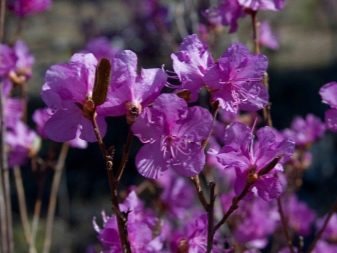
Landing
Any plant breeder can become the owner of such a shrub. All you need is to purchase seedlings. To do this, you need to contact a specialized store. You should be prepared for the fact that the price of real seedlings of this plant is quite high. It is very important to prepare the correct soil, it is its presence that ensures 90% of the successful planting of rhododendron. To do this, you must either purchase ready-made soil, or collect a substrate from coniferous forests, where its acidity does not exceed 5.5 units.
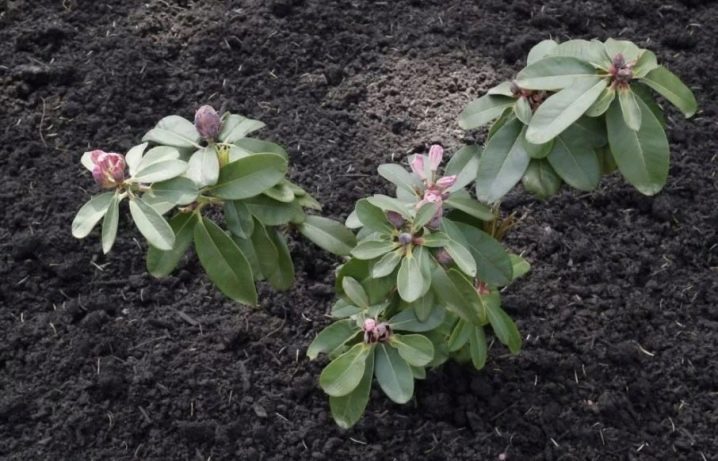
The further sequence of actions will be as follows.
- On the selected plot of land, a hole is dug for seedlings. Its width should be at least 70 cm and its depth should be half a meter.
- The first layer is drainage. It must be granite and by no means limestone. Otherwise, the plant will be sick for a long time or will not take root at all.
- Now, almost to the top, we fill the hole with the prepared substrate.... The top point of growth of the rhododendron itself should be several centimeters above the surface of the earth.
- We install a seedling in the middle of the pit and, holding it with one hand, fill the ground.
- Water the planting abundantly with water until the soaked soil completely hides the roots. Sprinkle the substrate if necessary.
- From above it is imperative to do mulching. Fallen spruce or pine needles are suitable for this, or you can use chopped and dried aspen bark.
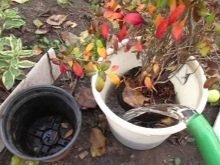
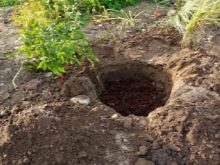
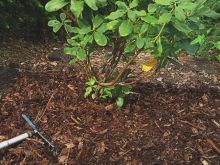
It is also important to remember that for tall varieties of Dahurian rhododendron, the distance between seedlings should be about 2 meters, and for low-growing shrubs, half a meter is enough.
But in order for the shrub to really take root well, grow normally and please with abundant flowering, it is necessary to choose the right place for its landing:
- the place should be well lit, but without direct exposure to the plant of direct rays of the sun;
- drafts and prevailing strong northerly winds are excluded;
- groundwater must lie at a depth of at least 2 meters, and the accumulation of melt or rainwater must be excluded at the landing site;
- there should be no buildings next to the landingthat cast a long shadow, as well as trees with a powerful superficial root system.
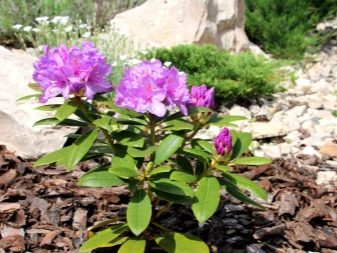
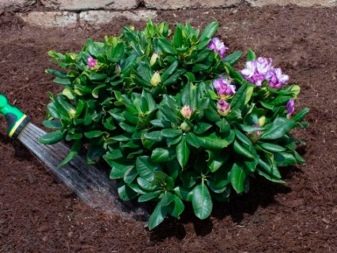
The ideal choice would be areas where coniferous and deciduous trees grow, where the soil is light and there is no excess moisture and direct sunlight.
Care
Before the onset of winter, additional covering material is prepared for the shrub from spruce "legs" and dry leaves. Watering the plant should be carried out regularly, as the rhododendron loves high humidity. Experienced botanists strongly recommend using only soft, and even better, melt water for watering it.
During the flowering of the plant, during its irrigation, special attention should be paid to ensure that the liquid does not fall on the flowers themselves, otherwise they will begin to rot, and ugly dark spots appear on their surface. Also, the Daurian rhododendron needs regular feeding. Once a year, one bucket of compost and humus is added to a shallow depth after flowering.
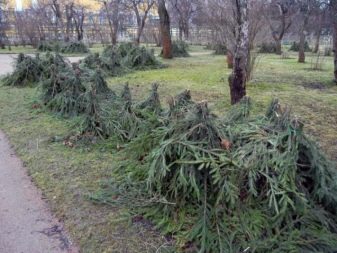
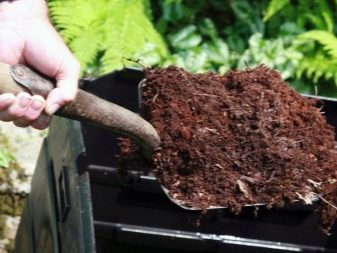
For better growth and development of the shrub, periodic feeding is carried out according to the following scheme.
- In 10 liters of water, 20 g of urea and potassium sulfate are dissolved. The solution is used for irrigation in the amount of three liters per one shrub once during the period of intense flowering, as a rule, this is the beginning of May.
- In 10 liters of water, dissolve 1 spoonful of potassium sulfate and any fertilizer for flowering plants. Top dressing is carried out once in a volume of 5 liters per shrub at the end of flowering.
- In June, after the complete end of flowering, each bush is fed with a solution of 5 liters of water, in which 15 g of superphosphate and potassium sulfate are dissolved.
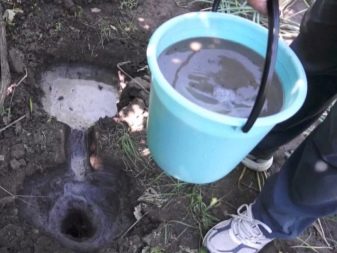
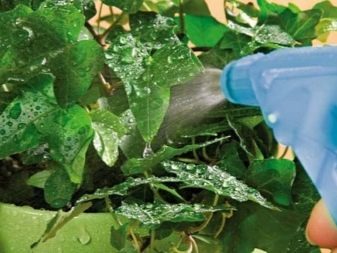
Compliance with these simple rules for caring for Daurian rhododendron will provide the plant with all the necessary nutrients and elements.
Reproduction methods
Currently, there are three main ways to grow this shrub at home.
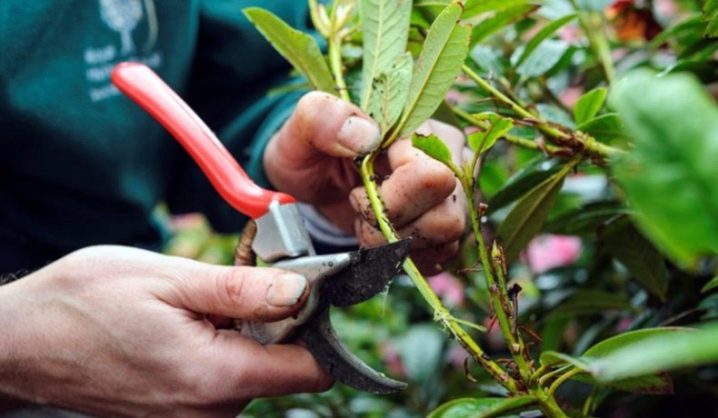
Seeds
This option is the longest and most difficult one. Usually only experienced growers resort to it. The scheme of actions is as follows.
- Sowing soil is prepared from equal proportions of peat and sand. They moisturize its surface well.
- Shrub seeds are laid out on top at a distance of about 5 cm from each other and cover the container with a film.
- Improvised greenhouse should be in a lit place with a constant temperature of about 20 degrees. Its contents are moistened and ventilated daily. First shoots should appear no earlier than 21 days later.
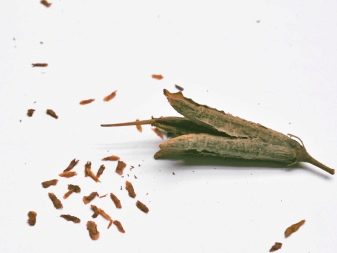
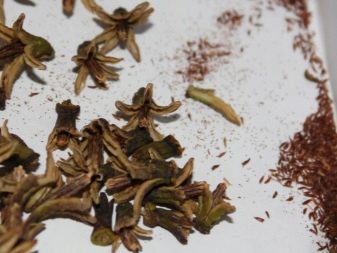
Sowing is carried out in early April. After the emergence of mass shoots, the film is removed, the seedlings are kept at a temperature of 16-18 degrees above zero. Daylight hours should be from 16 to 18 hours. Water only through the pallet. In June, that is, after 2–2.5 months from the moment of sowing the seeds, the seedlings are picked. The temperature should also be around 18 degrees.
The next year, in the spring, the seedlings are planted again and within a year they are grown according to the same scheme, and only after another year, the plants can be transplanted to a permanent place.
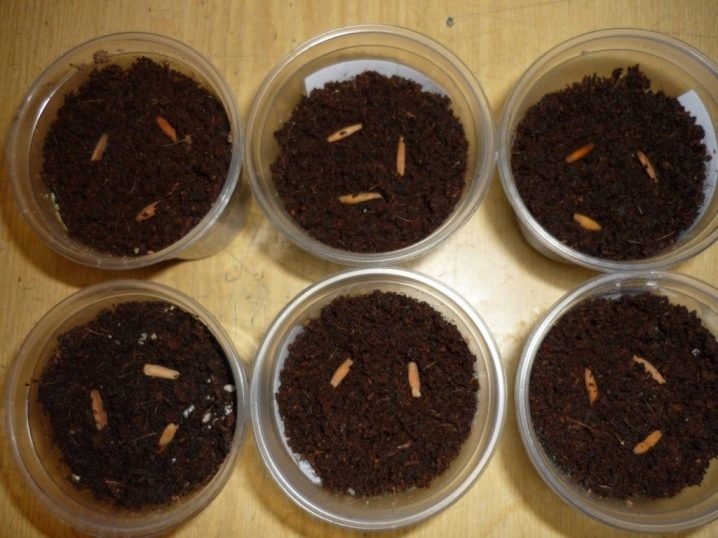
Root cut
This breeding option is suitable for beginners. It is simple and in a rather tight time frame. allows you to get a blooming Daurian rhododendron on your site.
- In early spring the lateral shoots of the bush are bent to the ground.
- Digging out from the side a small hole no more than 15 cm deep.
- It places a shoot in it with a necessarily developed bud. Sprinkle it on top with soil so that it cannot unbend on its own.
- Watering the root cut, and during the entire warm season, the workpiece is regularly watered and, if necessary, sprinkled with earth.
Rooting will continue until about mid-September. After that, you can completely separate the shoot from the parental root and transplant it into a temporary container. In winter, the cuttings are kept in a warm room with a temperature of about 18 degrees. And at the beginning of April they are transplanted to a permanent place.
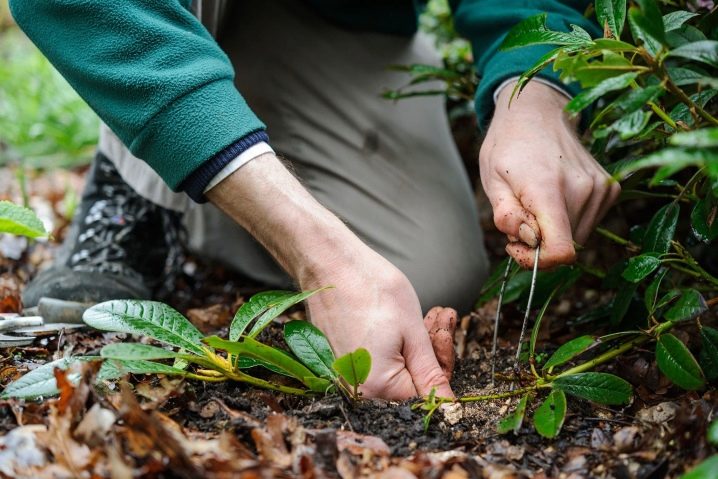
If desired, the root layers can not be separated in the fall, but leave the plant in this form until next spring and then immediately transplant it to a permanent place of growth.
Cuttings
If desired, the upper parts of the stems can also be rooted in summer. To do this, you need to do the following.
- Cut off young shoots in Julywhich appeared this year. Length - 5 cm, number of leaves - 3 pieces.
- Making an oblique cut and set the stems in a mixture of peat and sand under glass, at a temperature of 26 degrees. The substrate should always be moist.
- After two months, containers with seedlings transferred to a dark room, the temperature in which is about 12 degrees above zero.
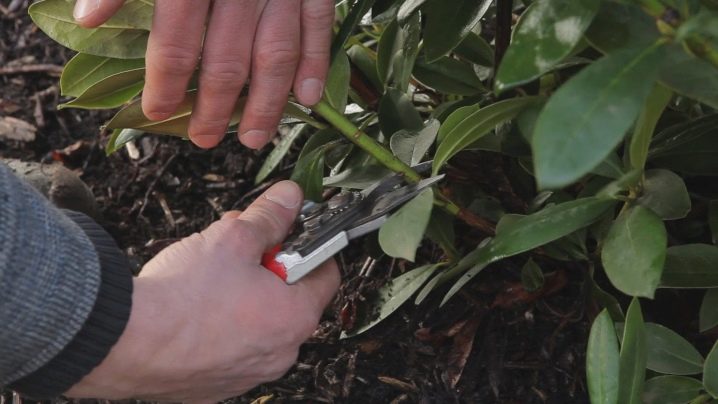
With the onset of spring, around the end of March, the cuttings are planted in a permanent place.
Diseases and pests
Dahurian rhododendron is susceptible to two diseases.
- Red spots. They appear on the leaves of a shrub and are located along its veins. Their appearance signals a lack of nutrients in the soil. Therefore, it is necessary to fertilize with nitrogen fertilizer.
- Chlorosis - This is the appearance of yellow spots on the surface of the leaves.Their appearance means that there is stagnant moisture in the soil, as well as a lack of nitrogen and potassium. Watering is made more rare and special feeding is used.

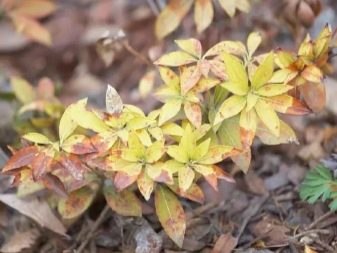
But if the shrub was planted in a favorable environment, and proper care is taken for it, then such diseases are not afraid of it.
Sometimes the Daurian rhododendron is attacked by pests:
- furrowed weevil - to get rid of it, use "Bazudin", "Furadan" or "Karbofos";
- spider mite, the rhododendron bug and the Asian garden beetle are eliminated by spraying the shrubs with Diazinon solution;
- from mealybug the plant will be saved by spraying with "Karbofos";
- fumigation of shrubs with sulfur allows you to eliminate narrow-winged moth-mine.

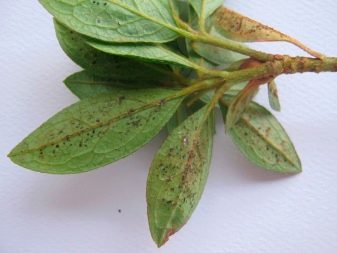
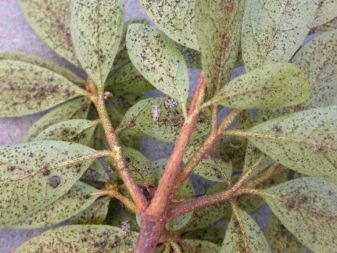
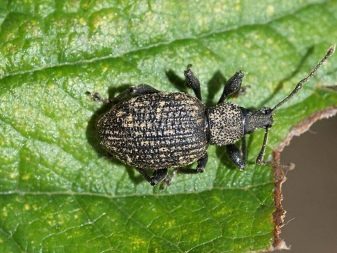
Following these simple tips will make it easy to grow such a beautiful plant as Daurian rhododendron at home.
For information on how to properly care for rhododendron, see the next video.





































































































The comment was sent successfully.